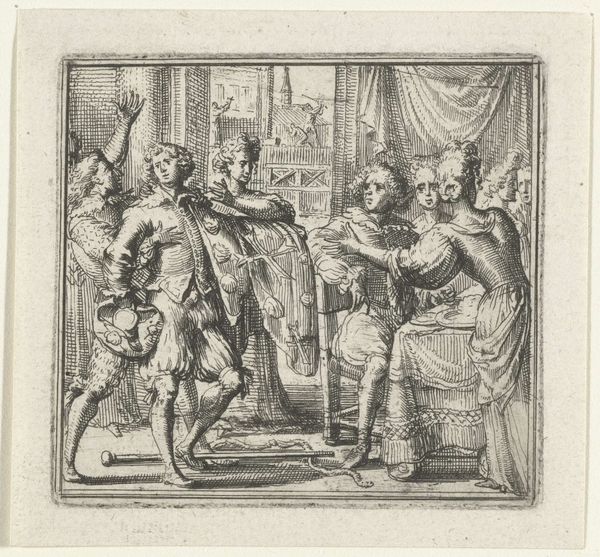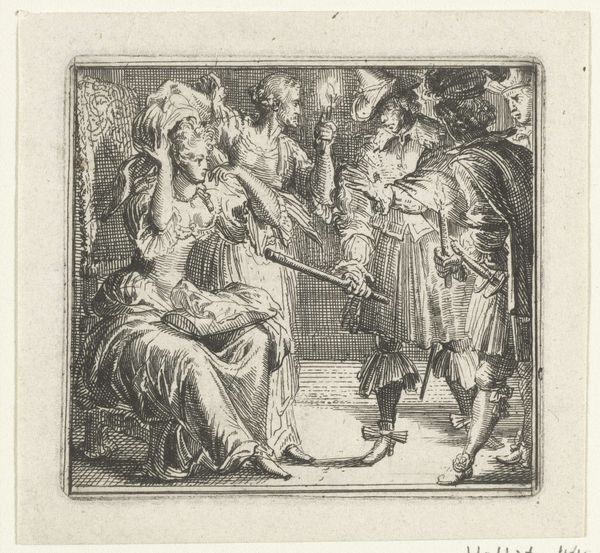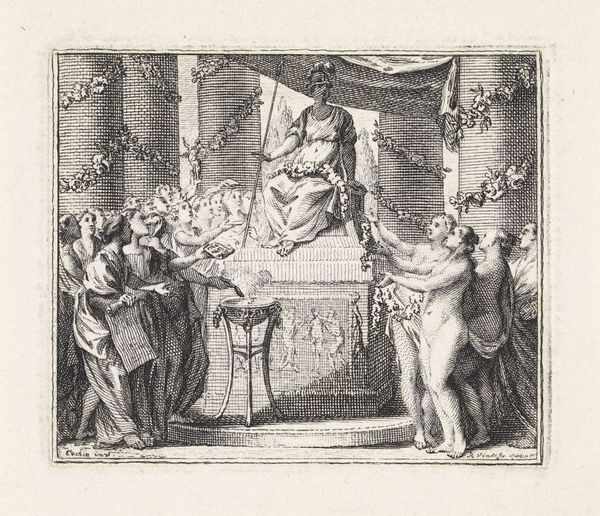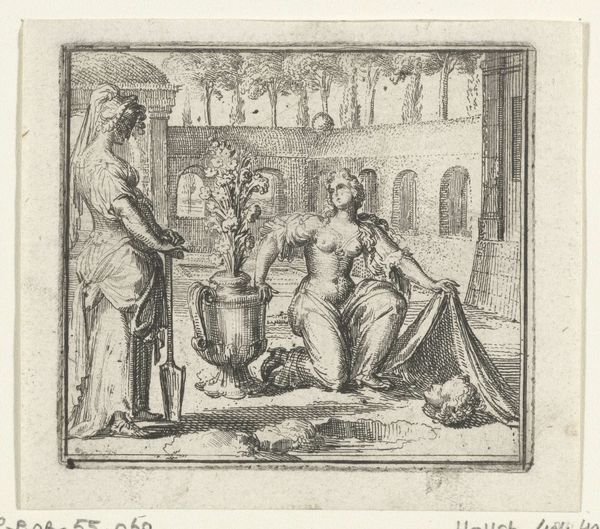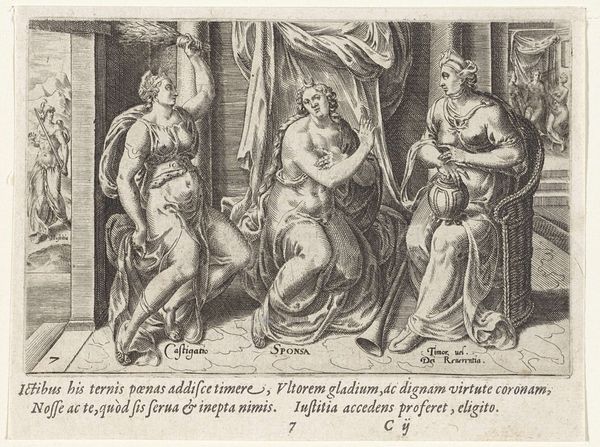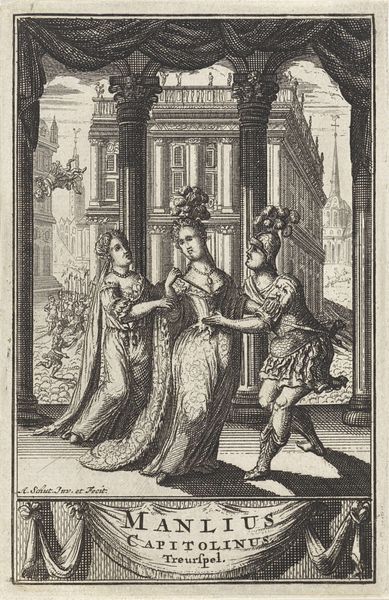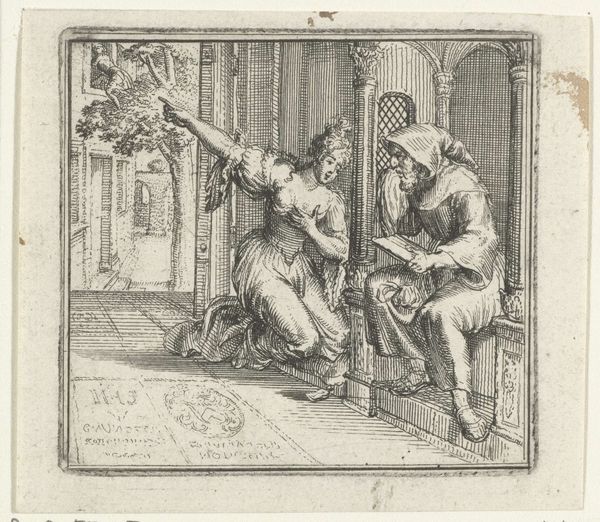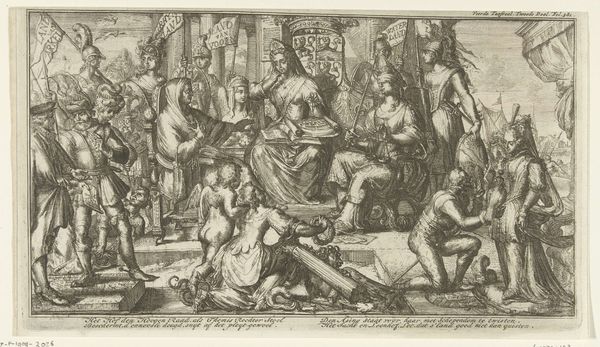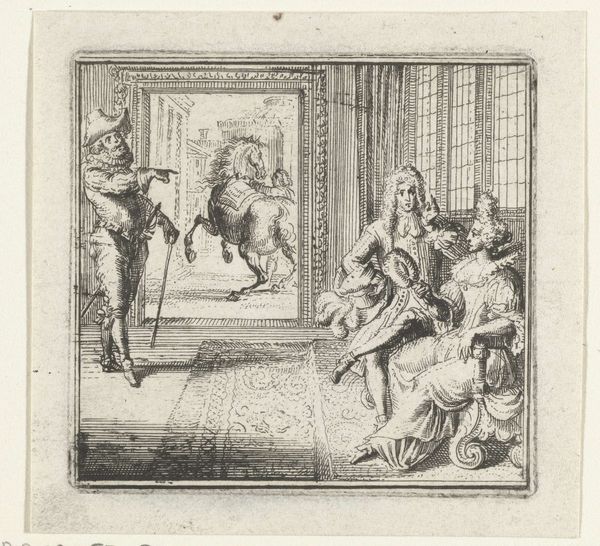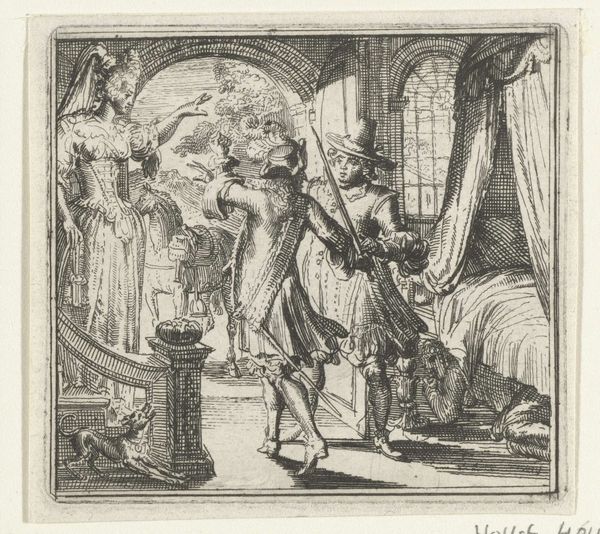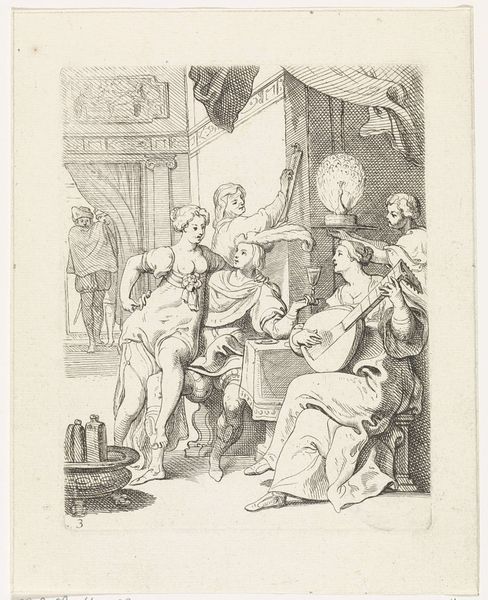
engraving
#
baroque
#
old engraving style
#
figuration
#
pen-ink sketch
#
line
#
sketchbook drawing
#
history-painting
#
engraving
Dimensions: height 75 mm, width 79 mm
Copyright: Rijks Museum: Open Domain
This etching, an illustration for Boccaccio’s Decameron, was created by Romeyn de Hooghe, a Dutch artist working in the late 17th and early 18th centuries. The Decameron, a collection of novellas, was written in the mid-14th century, just after the Black Death ravaged Europe. De Hooghe's image, full of the decadence of the Dutch Golden Age, speaks to the human desire for pleasure and distraction in the face of mortality. The woman reclines, a goblet in hand, her dress sliding off her shoulder, while the man seems to perform for her amusement. But the image is also laden with the gendered expectations of the time. The woman is the object of the man’s gaze, her pleasure secondary to his performance. She sits while he acts. What does it mean to find joy and freedom, if that is what is happening here, within such unequal power dynamics? It makes me wonder: who gets to indulge, and at what cost?
Comments
No comments
Be the first to comment and join the conversation on the ultimate creative platform.

